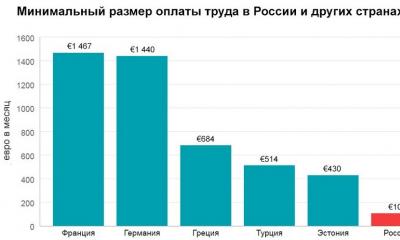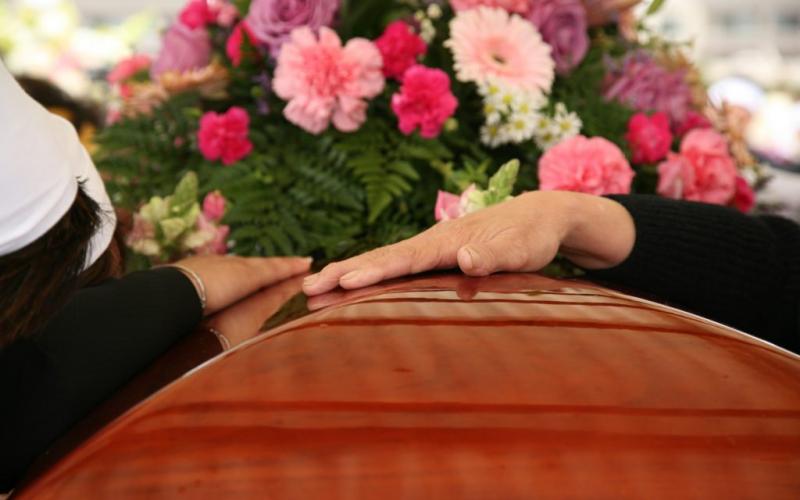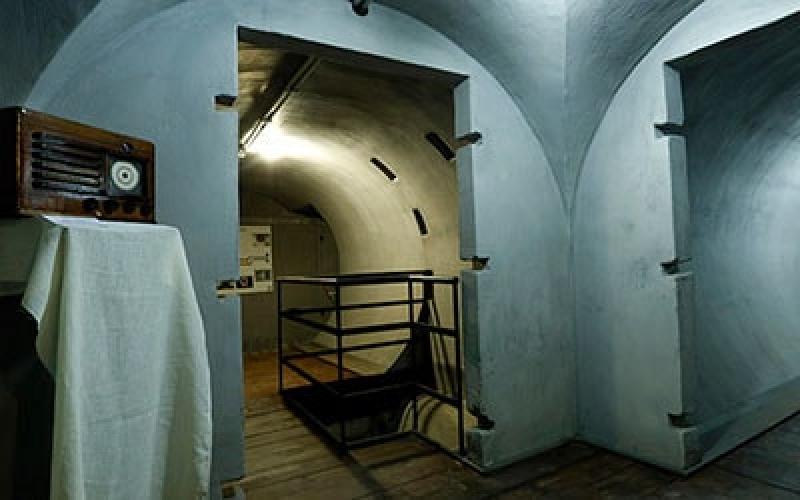Not only pensions and benefits are established by law. There is another important characteristic that is determined by the authorities - the minimum wage.
Its value in each region is established independently. Naturally, the largest minimum wage is set for Moscow. Below IQReview will understand what the minimum wage is, what it affects, and what the minimum wage for Muscovites is.
Minimum wage (the abbreviation “MROT” is also widely used: minimum wage) is a payment threshold below which an employer cannot pay its employee. It can be set in an hour, a month or a year.
Please note: the minimum wage is not a “bare” salary. This is the total salary, which includes the base rate, bonuses and other types of allowances (according to Article No. 133 of the Labor Code of the Russian Federation). That is, an employee’s net salary may be lower than the regional minimum wage. Also, the minimum wage is not a living wage.
This regulatory system was proposed and is still used as a means of “protecting” low-wage workers from wage undercutting. In the past, many businesses charged unfairly low prices for hard work. First of all, this concerned physical labor.
In addition, the installation and regular recalculation of the minimum wage is one of the state’s methods of combating poverty. Of course, it is very difficult to live on the actual minimum wage in the Russian Federation, but it is still possible. By the way, citizens must pay taxes on the minimum wage in full.
Most countries of the world have their own minimum wage (established by law). On the international levelit is regulated by the UN International Labor Organization Convention No. 131 (“On Minimum Wages”), adopted on June 3, 1970.
Not all states implement it: By As of the summer of 2016, only 53 countries had ratified the agreement (out of 251). Moreover, it is not the third world countries that are abandoning the “standard” method of regulation; they are not accepting such a system:
Japan: here the minimum wage is not set for the entire country or region, but separately for each industry;
Switzerland, Italy, some Scandinavian countries: do not set a minimum rate at all.
Basic provisions
Do laws regulate the minimum wage? Yes, in Russia this is law No. 82-FZ.
Who adjusts the minimum wage? In the Russian Federation, this is done at two levels of government: federal (a single value is established for the entire country) and regional (a value is established for a particular region, depending on a number of factors).
Does the minimum wage depend on the number of working hours actually worked? When calculating the size, a standard workweek of 40 hours is used.
The regional level administration can change the size of the minimum wage, but only upward (i.e.official salary inregions cannot be lower than the established minimum for the country).
The minimum wage changes regularly and depends on annual inflation. In fact, it should not be lower than in the region (for able-bodied citizens).
The main resource for payments is the employer's funds. For government organizations, these are budget funds (local or federal budget).
Why do we need a minimum wage?
This value is used by the state for the following purposes:
For financial protection of citizens who work in low-paid positions (as mentioned above).
As a basis for calculating benefits (unemployment, temporary disability).
Minimum wage in the Russian Federation
Now about specific numbers, for starters - for the Russian Federation (at the federal level):
From January 1, 2017: 7,500 rubles. It did not change with the onset of the new year; before that, it was last indexed on July 1, 2016. Then it was raised from 6,204 to 7,500 rubles.
From July 1, 2017 (already known) there will be minor changes to the minimum wage: it will rise from 7,500 to 7,800 rubles.
It was assumed that from the beginning of 2017, the minimum wage in Russia would be raised to 8,800 rubles. However, due to the crisis situation in the country, such a step was abandoned, and there was no New Year indexation at all. Most likely, after the July increase, wages will be revised next year - 2018.
Minimum wage in Moscow
T Now the most interesting question for most:what is the minimumAre residents of the Russian capital entitled to a salary?
Minimum salary in Moscow in 2017(from January 1) is 17,561 rubles. This value applies to all citizens who work in Moscow companies, in addition to employees of budgetary structures.
For statistics, we present the minimum wage for Moscow by year:
| Period | Size, thousand rubles |
|---|---|
| 2010, from January 1 to April 30 | 9.5 |
| 2010, from May 1 to December 31 | 10.1 |
| 2011, from January 1 to July 31 | 10.4 |
| 2011, from August 1 to December 31 | 11.1 |
| 2012, from January 1 to June 30 | 11.3 |
| 2012, from July 1 to December 31 | 11.7 |
| 2013, from January 1 to June 30 | 11.7 (not changed) |
| 2013, from July 1 to December 31 | 12.2 |
| 2014, from January 1 to May 31 | 12.6 |
| 2014, from June 1 to December 31 | 14 |
| 2015, from January 1 | 14.5 |
| 2015, from April 1 | 15 |
| 2015, from June 1 | 16.5 |
| 2015, from November 1 | 17.3 |
| 2016, from January 1 | 17.3 (not changed) |
| 2016, from October 1 | 17.561 |
And for comparison, here are the data on the minimum wage of Muscovites in the 2000s:
| Period | Minimum wage, rubles |
|---|---|
| 2002, from January 1 | 1100 |
| 2002, from September 1 | 1270 |
| 2003, from January 1 | 1500 |
| 2003, from July 1 | 1800 |
| 2004, from May 1 | 2000 |
| 2004, from October 1 | 2500 |
| 2005, from May 1 | 3000 |
| 2005, from October 1 | 3600 |
| 2006, from May 1 | 4100 |
| 2006, from September 1 | 4900 |
| 2007, from May 1 | 5400 |
| 2007, from September 1 | 6100 |
| 2008, from May 1 | 6800 |
| 2008, from September 1 | 7650 |
| 2009, from January 1 | 8300 |
| 2009, from May 1 | 8500 |
| 2009, from September 1 | 8700 |
What about other countries?
At the current (for the first half of May) ruble-dollar exchange rate, the Moscow minimum wage is equal to$ 300, and the all-Russian -$ 130.
 Comparison of minimum wages in Russia with other countries
Comparison of minimum wages in Russia with other countries For comparison, we indicate what minimum wages are established in other countries (translated into American dollars):
USA. In 6 states there is no minimum rate at all. At the state level, you cannot pay less than 7.25 per hour of work. For some large cities, individual (inflated) rates apply. Highest in the District of Columbia (11.5$ per hour).
Australia. In this country, companies cannot pay their employees less$ 2190 per month. However, taxes in Australia are among the highest. Adjusted for all fees, the employee must receive at least 9.5$ per hour.
Luxembourg. Minimum per hour of work - 9.24$.
Belgium - $8.57 per hour.
Ireland - no less than $8.46 per hour.
France - minimum $8.24 per hour.
Czech Republic - no less than $387 per month.
Estonia - no less than $440 per month.
Israel - at least $1200 per month.
Mexico - at least $85 per month.
Netherlands - at least $1850 monthly.
UK - from $1615 per month.
Current news about the minimum wage (video)
The Ministry of Labor submitted to the government a bill to increase the minimum wage to the subsistence level. “Now the law on increasing the minimum wage has been submitted to the government by the Ministry of Labor, so we will now discuss it,” Deputy Prime Minister Olga Golodets told reporters.
The head of the Ministry of Labor Maxim Topilin explained that it is planned to increase the minimum wage in two stages: from January 1, 2018 - to 90% of the subsistence level of the working population, from January 1, 2019 - to 100%. To implement the first stage in 2018, 25 billion rubles will be required from the federal budget for employees of government agencies.
“If we go at a rate of 90% from January 1, 2018, then the federal budget will be 25 billion (rubles) for federal institutions,” Topilin said.
The Ministry of Labor estimated business expenses at the first stage at 43.9 billion rubles. Another almost 56 billion rubles. will need to be allocated from regional and municipal budgets.
“Expenditures of employers in the real sector of the economy are projected at 43.9 billion in 2018,” the press service of the Ministry of Labor said in a statement.
“Increasing the minimum wage will require funds from budgets at all levels. If the bill is adopted, additional costs for increasing the minimum wage, according to the Russian Ministry of Labor, will be in 2018: for employees of federal government institutions - 24.6 billion rubles, for employees of state institutions of constituent entities of the Russian Federation and municipal institutions - 55.7 billion rubles.” , - the department notes.
The Ministry of Finance, which began preparing the draft federal budget for 2018 and 2019–2020, did not promptly respond to Gazeta.Ru’s request.
Prime Minister Dmitry Medvedev gave instructions to the heads of the ministries of labor, finance and economic development to prepare a draft law on increasing the minimum wage to the subsistence level of the working population in early May following a discussion in the State Duma of a report on the results of the cabinet’s work in 2016. He later confirmed that this task must be completed.
“In the next two years, I have set a goal, now the project is being prepared, we will completely raise the minimum wage to the subsistence level. This must be done,” Medvedev said, in particular, at a recent meeting with employees of the Nevsky Plant in St. Petersburg.
From July 1, this figure rises to 7.8 thousand rubles. In April, by its decree, the government set the cost of living at 9,691 rubles. In particular, the cost of living for an able-bodied Russian was set at 10,466 rubles, for pensioners - 8 thousand rubles, for children - 9,434 rubles. Over the past two quarters, this figure has decreased by 265 rubles, or 2.7%, despite the fact that the rise in prices has not stopped all this time.
Since the beginning of this year, Deputy Prime Minister Olga Golodets has repeatedly expressed her concern about the situation of poor working Russians.
According to Rosstat, the number of people with monetary incomes below the subsistence level in 2016 amounted to 19.8 million, that is, 13.5% of the total population of Russia.
Medvedev previously called raising the minimum wage to a subsistence level a task for the next few years. Minister of Labor and Social Protection Maxim Topilin also argued that in order to equalize the minimum wage and the cost of living, it may take about three to five years.
About 5 million people in Russia receive salaries at the level of the minimum wage, Deputy Prime Minister Olga Golodets reported in February. According to her, the low level of salaries is due to the reluctance of businesses to invest in innovative technologies.
The poverty level in Russia has been growing in recent years. In total, according to Rosstat, 19.1 million people, or 13.3% of Russians, had incomes below the subsistence level in 2015 - this is a record value since 2006.
According to Golodets, approximately a quarter of all poor Russians, 4.9 million people, are employed people with very low wages, which are practically impossible to live on.
The cost of living is set quarterly, based on the results of the previous period, and varies from region to region, where it is calculated, in turn, on the basis of the cost of living established in Russia. The cost of living is also different for three groups of the population: the working population, children and pensioners. In Russia as a whole, per capita in the third quarter of last year it amounted to 9.9 thousand rubles.
The minimum wage is approved by law; constituent entities can set their own values.
On this topic, additional conditions are stipulated in the Labor Code, Article 133.
- The minimum wage is a value that is approved in all regions at the same time and is fixed by issuing a federal law.
- In budgetary enterprises, the size of the indicator is supported by the corresponding item in the budget, in private firms - by the provision of the employer.
- An employee’s salary for a month, provided that he has worked the entire workload and coped with the assigned tasks, cannot be less than the established amount. From July 1, 2017, it, as already mentioned, will be 7,800 rubles. In this case, the established amount must correspond to the amount of cash payments (tariff rate, compensation, remuneration, etc.) for the working month.
According to Article 133, it is considered mandatory to maintain the minimum wage at the level. But in practice this provision has not yet been implemented.
If the minimum wage is significantly increased, all insurance payments that registered individual entrepreneurs must pay will automatically increase.
The increase in the minimum wage that occurred in July 2016 did not affect the volume of insurance transfers.
The reason was the fact that the law provides for only one recalculation during the calendar year. The same situation is expected in 2017.
The minimum wage is established by law.
The accrued salary cannot be less than the established limit.
However, the actual amount received with deduction may not reach the minimum wage.
Some regions of the Russian Federation set their own minimum size.
It is approved by a special agreement with the participation of regional authorities.
From July 1, the minimum wage will increase to 7.5 thousand
According to the Minister of Social Protection and Labor Maxim Topilin, in 2017 the salaries of employees of the public sector of the Russian Federation will definitely increase. Until the end of 2016, the government is calculating the costs of these measures in order to determine the amount of assistance from the federal budget.
A gradual increase in wages was also planned by decrees of the President of Russia, signed back in May 2012. According to the task, by 2018 the wages of public sector employees should exceed the average wage in the region by 2 times. On the eve of 2017, Minister Topilin also confirmed the federal plan, saying that an increase will definitely occur. However, so far he has not announced specific figures, since the statistics are extremely dynamic.
Salary increase in 2017
Taking into account the previous dynamics and the experience of recent years, we can say with confidence whether salaries will be increased in 2017 - undoubtedly yes. Over the past 18 years, salaries of public sector employees in Russia have been constantly growing in nominal terms. For example, in comparison with 2000, in 2015 a formal increase in payments to all categories was recorded by 15 times, from 2,223 to 34,030 rubles.
Despite the slowdown in wage growth in 2014, due to lower oil prices, in the first half of 2016 the average monthly wage of workers in Russia amounted to 36,525 rubles, which is 7.8% higher than in 2015. Thus, you can see Will there be an increase in salaries for public sector employees in 2017? Formally, there will be an increase, but taking into account inflation, salaries in real terms will not change or will increase insignificantly.
Salaries of public sector employees in 2017
The government of the Russian Federation recently approved a new methodology for calculating the average level of income of citizens, so the news about what the average salary is from January 1, 2017 is very relevant. A survey by the All-Russian Popular Front, conducted in April 2016, also aroused increased interest in this issue. According to the data provided, approximately a third of respondents earn from 10 to 15 thousand rubles monthly, a fifth of Russian doctors receive less than 10 thousand rubles, and an income of more than 50,000 indicated 1.26%. Thus, the minimum wage in 2017 is of great importance for the standard of living in the country.
Increase in salaries for public sector employees in 2017
For those who are interested in the topic of what the salaries of public sector employees will be in 2017, the latest news from the government came as an unpleasant surprise. In fact, the increase in wages will occur exclusively in statistical reports, and real indicators will not change.
Pay for state employees and the minimum wage from January 2017 may be calculated according to a new scheme. All bonuses and allowances will be added to the working salary, thereby causing an artificial increase in the average level of income. This innovation has been discussed since 2015, but the law has not yet been signed and there is still no confidence in such a scenario.
Salary indexation 2017
Vnesheconombank provided the latest news on the topic of public sector wages in 2017, publishing data on the volume of indexation of public sector wages from 2017 to 2020. The medium-term economic forecast was released in mid-August. According to analysts’ calculations, in Russia, salaries for public sector employees in 2017 will increase by a total of 2.3 trillion rubles. In total for 2017-2020, indexation will amount to 5.3 trillion. rub., of which 3.5 trillion. rub. will be allocated to the federal budget.
Minimum salary 2017
The concern of many public sector workers is the increase in salaries for public sector employees in 2017, the latest news about which was announced by Deputy Minister of Finance Nesterenko. On July 30, she announced the depletion of the country’s economic reserves by the end of 2017, if the situation does not change. This means that the government will have limited ability to make payments to public sector employees.
On the topic of whether there will be a salary increase in 2017, only one thing is clear - there will definitely be indexation. Its cancellation is not envisaged and, despite alarming conversations, no official statements have been made. The indexing coefficient will be at least 5.5%, which will completely cover the inflation of 2017. However, a real increase in a significant volume is unlikely to happen again.
From May 1, 2018, the minimum wage will be 11,163 rubles (+17.6%), i.e. will be equal to the federal cost of living for workers. Vladimir Putin announced this at a meeting with workers of the Tver Carriage Plant.
Russian President Vladimir Putin signed a law on increasing the minimum wage (minimum wage). According to it, the minimum wage will be increased by 4% from July 1, 2017, from 7,500 rubles. up to 7800 rub. per month.
Table of regional minimum wages for 2017 by constituent entities of Russia. More precisely, it is called the Minimum Wage in the Regions (MW). Not all regions have raised the minimum wage bar above the federal one.
In fact, the employee’s salary paid in person may be lower than the regional minimum wage, since the minimum wage is calculated from the accrued salary, i.e. before personal income tax is withheld. Accordingly, with an accrued salary of 1 minimum wage (7,800 rubles), the amount of payment to the employee in person is reduced by the amount of personal income tax. Also, the calculation of sick leave may not be lower than the calculation based on the local minimum wage.
|
|
 Rice. Dynamics of Inflation in Russia 2000-2016 |
You can find out about the minimum wage and its changes in 2016 in the article








